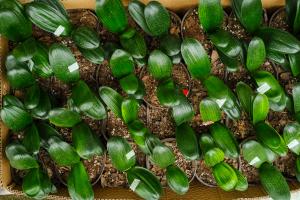How to Plant Water Lilies in a Pond
Water lilies are a popular addition to any pond due to their beautiful floating flowers and green floating leaves. Planting water lilies in a pond is a simple process that can be completed by anyone with a few basic tools and knowledge of the proper planting technique. In this article, we will guide you through the steps of planting water lilies in a pond.
Step 1: Choose the right water lilies
Before planting water lilies in your pond, it is important to choose the right species. There are various types of water lilies available in the market, each with different requirements based on sunlight, water depth, and temperature. It is best to do some research to understand which species suits your pond's requirements. In general, the hardy water lilies are best for beginners and can be grown in full sun to partial shade.
Step 2: Choose a suitable planting location
The next step is to choose a suitable planting location for your water lilies. The ideal location should have a consistent water depth of at least 18-24 inches and receive 4-6 hours of direct sunlight daily. It is important to avoid locations with strong currents or waterfalls as they can damage the tender roots of the water lilies.
Step 3: Prepare the planting container
Water lilies are best grown in a planting container that can sit on the pond's bottom. The container should have no holes, and the sides should be about 8 inches high to prevent the water lilies' roots from spreading too much. Additionally, it should be filled with a layer of clay or loamy soil to promote the growth of the water lilies. Before filling the container, cover the bottom with a layer of landscape fabric to prevent soil from escaping into the pond.
Step 4: Plant the water lilies
Once you have the planting container ready, it's time to start planting your water lilies. Begin by placing the plant in the center of the container, and then start adding soil around it. Leave the tip of the rhizome exposed to sunlight. Make sure the soil is evenly distributed to support the plant's growth. Afterward, gently lower the container into the pond, making sure the lily pad leaves float on top of the water's surface.
Step 5: Add fertilizers
Water lilies require a good supply of nutrients to grow, and therefore, it is highly recommended to add fertilizers to the planting container. A slow-release fertilizer tablet can be pressed about an inch into the soil, or you can use a liquid fertilizer that is easy to absorb. Make sure that the fertilizer is made for aquatic plants only and follow the instructions carefully to avoid over-fertilization.
Step 6: Maintenance
Water lilies require some maintenance, but it's not burdensome. Keep in mind that these plants need consistent water depth and sunlight, so monitor the pond's water level and make sure to remove any leaves that block out the sunlight. Trim off any dead leaves or flowers and avoid using chemical-based pesticides as they can harm the plant.
Overall, planting water lilies in a pond can be a fun and rewarding experience. By following the above steps, you can quickly become a water lily expert and enjoy the beautiful floating flowers and green floating leaves in your pond for years to come.

 how many times do yo...
how many times do yo... how many planted tre...
how many planted tre... how many pine trees ...
how many pine trees ... how many pecan trees...
how many pecan trees... how many plants comp...
how many plants comp... how many plants can ...
how many plants can ... how many plants and ...
how many plants and ... how many pepper plan...
how many pepper plan...





























